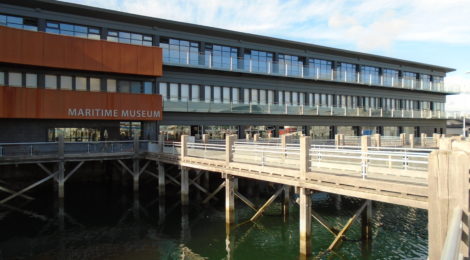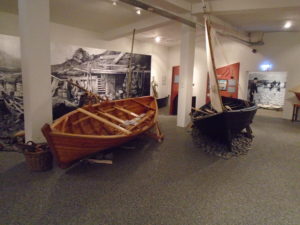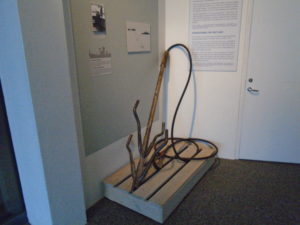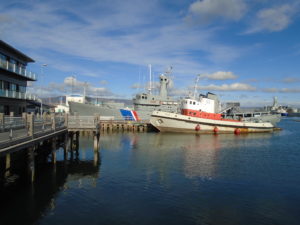
Reykjavik Maritime Museum
In the north western end of Reykjavik one can find most of the touristic attractions and located on a a pier is the Maritime Museum. The primary focus of this museum is on Iceland’s fisheries, which were and still are the economic life blood of this small arctic nation. The exhibits cover primarily the methods of fishing and preserving the various catch from the 16th century on-wards.
In Iceland, to go rowing is to go fishing, since traditionally the fishermen and women would leave the small coastal villages in small clinker built [link to come] row boats. These varied in size but were generally 5 to 10 meters long, furnished with a mast and sail in various forms of rigging and a tiller at the back to steer. These small crafts were used to bring in all types of catch, from the cod to the Greenland shark. The fish would be salted and air dried on wooden racks along the coast, while the shark would be fermented in its own juices to make hákarl, which incidentally tastes rather good when chased with a shot of brennivín.

Clinker Built Icelandic Fishing Boats
The advent of the industrial revolution in Iceland and the triple expansion steam engine [link to come], allowed the native fishermen to reach further banks, to go out in harsher weather and stay at sea longer. These were not luxury vessels but hard working ships providing little comfort to the sailors venturing out in the North Atlantic for cod and various catch. The perils of such a life are detailed by maps showing all the ships lost at see around the island.

Icelandic Trawler’s Crew Cots
Another unintended consequence of the longer reach of fishing trawlers was to provide vessels from other countries the ability to reach the fishing banks of Iceland. This situation led to quite an unconventional conflict between NATO allies in the late 50s and early 60s, called the Cod Wars. This conflict initially pitted fishing trawlers against fishing trawlers, but it would escalate to British frigates escorting its fishing fleets while the Icelandic coast guard would send out its patrol ships to cut away illegal fishermen’s nets with a net cutter. The net cutter was simply an over sized quad fishing hook dragged behind a patrol ship, its weight would send it down to meet the lines leading to the net and by pulling perpendicularly to the direction of the trawler the forces involved would snap the lines, the trawler thus loosing an expensive net and catch.

Net Cutter
Moored to the pier just outside the museum is the patrol ship ICGV Óðinn, which played an important role during this peculiar conflict cutting away nets and towing many stranded vessels back to safety. Powered possibly by the last working Burmeister & Wain diesel engine in the world, she was decommissioned in 2006. She featured in the movie Flags of our Fathers, and also effected a rescue of a landing craft about to flounder into a cliff during the filming of the movie.

ICGV Óðinn
